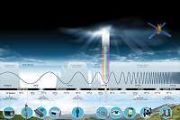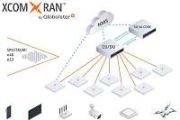The Focusing Optics x-ray Solar Imager (FOXSI) is a sounding rocket payload to test hard x-ray (HXR) focusing optics and position-sensitive solid state detectors for solar observations.
The mission is funded under the NASA Low Cost Access to Space program. The FOXSI project is led by the Space Sciences Laboratory at the University of California, Berkeley. The NASA Marshall Space Flight Center is responsible for the grazing incidence optics, while the Astro-H team at JAXA/ISAS has provided double-sided silicon strip detectors.
FOXSI is a pathfinder for the next generation of solar hard x-ray spectroscopic imagers. Such observatories will be able to image the non-thermal electrons within the solar flare acceleration region, trace their paths through the corona, and provide essential quantitative measurements such as energy spectra, density, and energy content in accelerated electrons.

The FOXSI team sits in front of the integrated payload before it gets ready for launch (from left to right: Paul Turin, Shinya Saito, Stephen McBride, Steven Christe, Säm Krucker, Lindsay Glesener). Credit: NASA/S. Fitzpatrick
Previously, techniques to collect and observe the high energy x-rays streaming from the sun were hampered by the fact that x-rays at high energies cannot be focused with conventional lenses the way visible light can be. When an x-ray encounters a standard glass lens it passes through the lens completely. X-ray telescopes have therefore relied on imaging that doesn't rely on focusing. This is a very effective technique when looking at a single bright event on the sun, such as the large burst of radiation and x-rays from a solar flare, but doesn't work as well when searching for many faint events occurring simultaneously.
The FOXSI instrument, however, makes use of new iridium-coated nickel/cobalt mirrors that do successfully cause x-rays to reflect, as long as the x-rays come in from a nearly horizontal direction. Several of these mirrors in combination help collate the x-ray light before funneling it to the detector. These focusing optics make faint events appear brighter and crisper.


































































